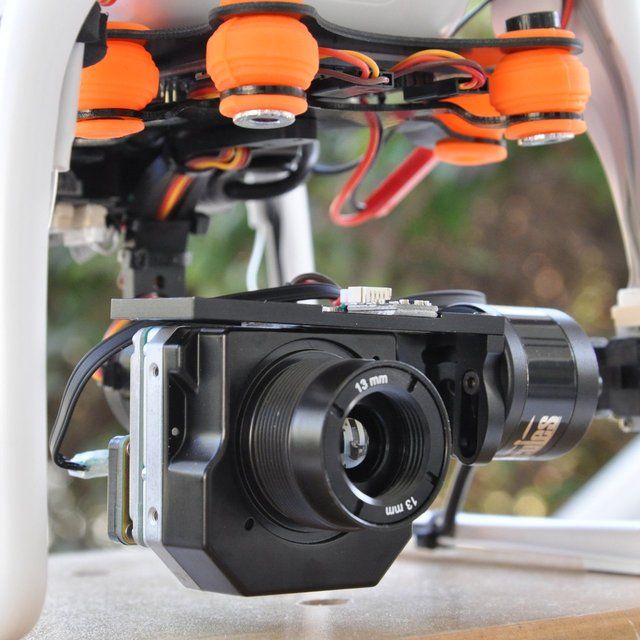Thermal imaging drones for unmanned aerial vehicles can be valuable tools for a variety of applications, including search and rescue, agriculture, infrastructure inspection, and more. Providing product specifications and compatibility information is crucial for drone enthusiasts and professionals looking to invest in a drone thermal imaging camera as well. To increase the effectiveness of your article, consider the following suggestions.
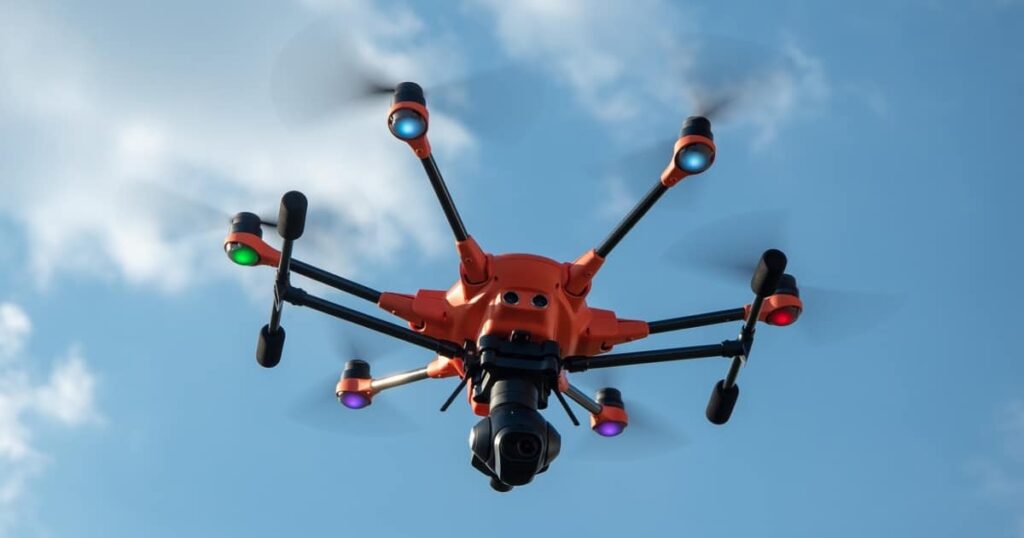
9 Key advantages of thermal drones parrot
1. Enhanced Low-Light Visibility
Heat-related imaging camera-equipped unmanned skyborne vehicles enable drone operations in low-light conditions, offering clarity even during nighttime drone search activities. Operating independently of visible light, thermal drone cameras these drones facilitate continuous drone search and rescue missions, enabling security personnel to patrol extensive areas at night and easily identify intruders for enhanced premises security.
2. Safe and Cost-Efficient Inspections
Instead of deploying individuals to hazardous or challenging locations, these heat-related” imaging camera drones provide a secure and cost-effective alternative. For instance, assessing a damaged roof after a storm becomes safer when conducted by drone-survey drone or camera from the air, allowing engineers to inspect buildings and bridges post-natural disasters promptly, and determine structural integrity.
3. Rapid Heat Source Detection
Thermal drones excel at swiftly identifying heat signatures, making it easier to locate lost individuals in forests or identify malfunctioning machinery due to overheating.
4. Precision in Agriculture Monitoring
Farmers can use thermal imagery and thermal drone and aerial video from unmanned skyborne vehicles to pinpoint dry areas in their fields, ensuring crops receive optimal water amounts for healthier growth and potentially higher yields.
5. Energy Efficiency Analysis
Property owners can identify heat loss from buildings using thermal drone imagery, enabling improved insulation and energy cost savings. This ranges from city councils using UAV vehicles for analyzing public buildings for efficiency improvements to industries using thermal drones to identifying areas in factories where enhanced insulation could lead to energy conservation.
6. Reduced Manual Labor
Tasks that once demanded extensive manual labor, such as checking power lines or surveying large areas like solar farms, can now be performed more efficiently with Infrared UAV vehicles, and skyborne above, offering time and resource savings.
7. Real-Time Analysis
Many Infrared UAV vehicles offer live video streaming camera capabilities, enabling teams to make real-time decisions based on current camera conditions, such as firefighters assessing a scene.
8. Improved Wildlife Monitoring
Researchers can use low, drone cameras to study animal populations without disturbance, low, detect heat signals from animals, even when camouflaged or in hiding.
9. Enhanced Surveying in Challenging Conditions
While some thermal imaging camera drones may struggle in fog or smoke, continue to provide valuable skyborne data. Operating in different spectrums, some thermal imaging camera drones remain effective whether in misty mornings or smoky environments, ensuring consistent thermal imaging drone is’ functionality.
What is thermal imaging?
Thermal cameras allow people to see what their eyes cannot. They detect invisible features of thermal radiation or reflections from objects regardless of lighting conditions.
The infrared spectrum is part of the electromagnetic spectrum. It is present around us constantly but is invisible to the naked eye, except for a small range in the middle of the spectrum known as visible light.
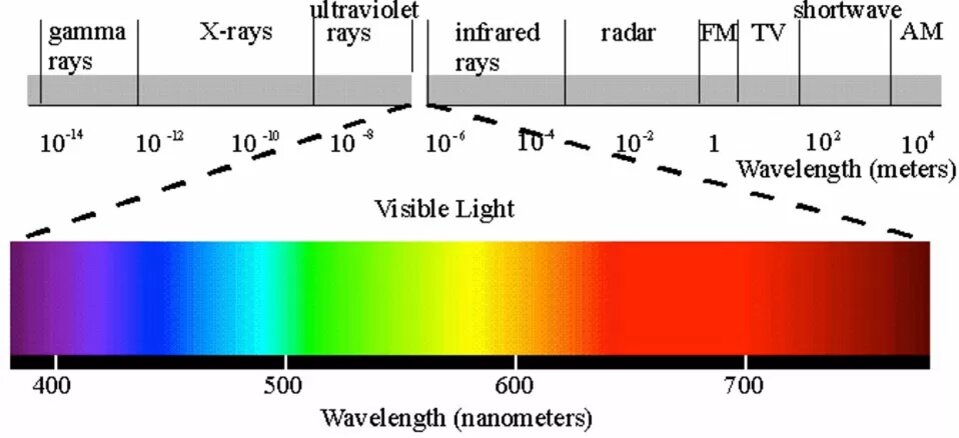
Our eyes perceive only light reflected from surfaces. It reflects different wavelengths, allowing us to see various colors. However, thermal energy can not only be reflected but also emitted.
When discussing how effectively an object emits heat-related energy, it refers to its radiation. Different objects emit thermal energy differently, depending on various factors such as material or surface conditions.
Objects like humans, animals, or rocks have high emissivity, while shiny metals, for example, have low emissivity. However, this changes if they are painted or corroded.
When two objects are close and have similar temperatures but different thermal emissions, they will appear differently when the image is captured by a thermal camera.
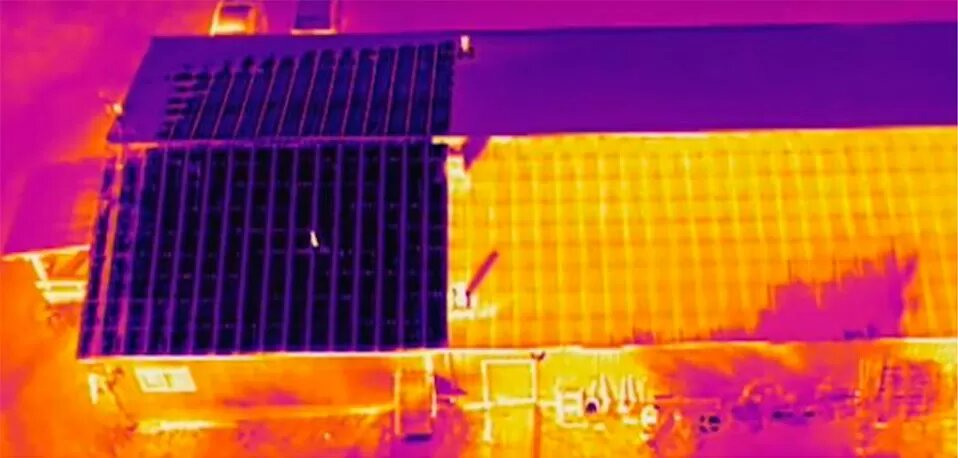
For example, the roof on the top left is a new unpainted section, and it reflects the cold sky.
Knowing this information, it’s essential to keep in mind a few things:
- Thermal energy is a surface phenomenon, and thermal cameras cannot see through glass or walls.
- The results of thermal imaging depend on factors such as the surface condition and how close the captured object is.
- It’s crucial to understand that thermal cameras can measure differences in emitted energy but not temperature.
What do different colors mean in thermal imaging?
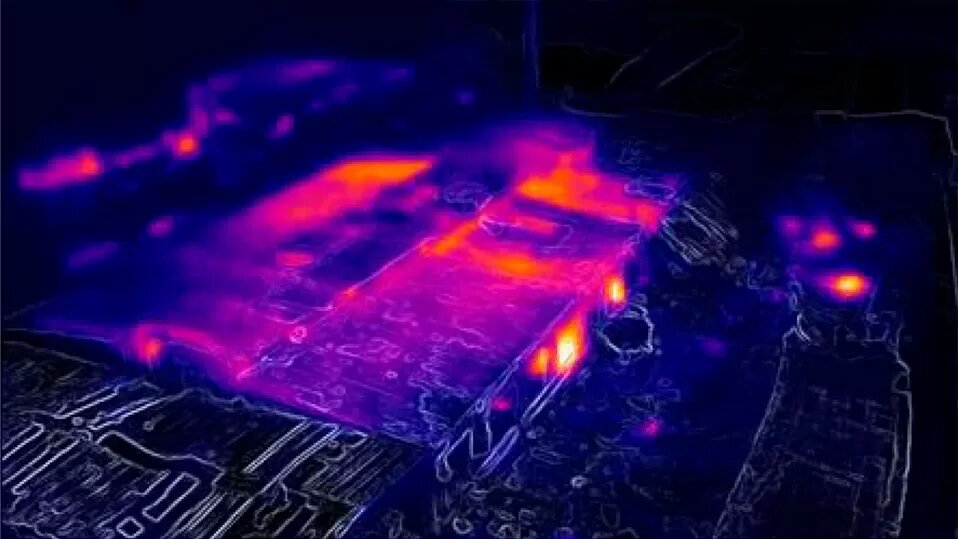
These vibrant colors or grayscale details represent a highly specific and extensive set of data. Understanding what features or information they depict and how best to utilize them in field conditions enables camera users to detect and interpret objects of interest.
Basic color palettes include:
- White hot (displaying hot as white)

The black-and-white palette simplifies the search, display, and understanding of images with a wide temperature range and low above. This display is convenient for exploring natural landscapes with low above or urban spaces with low above.
- Black Hot (displaying hot as black)
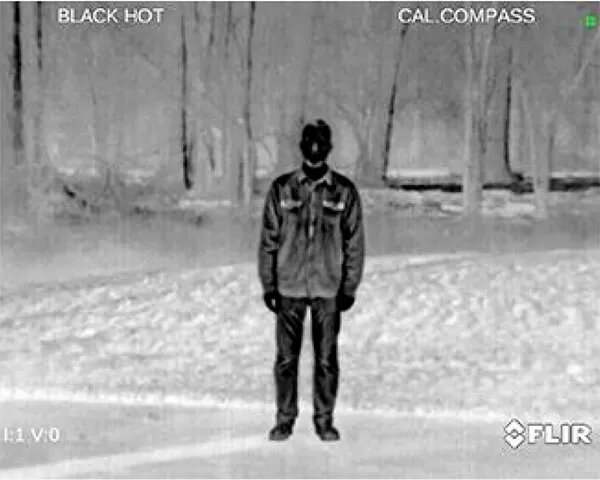
This image is an inverted version image of White Hot, displaying warm objects as black and cold ones as white.
Most commonly used by hunters or police.
There are also other display methods.
- Iron Bow.
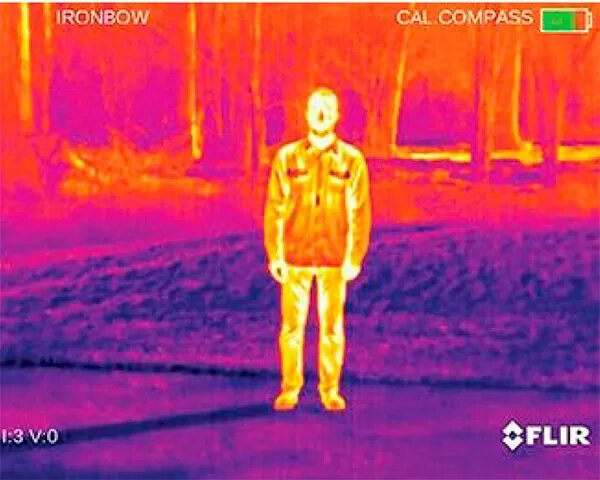
The universal palette, allowing for quick detection of thermal anomalies and body part temperature data, uses color to show heat distribution and fine details, displaying warm areas with warm colors and cooler areas with cool shades in the blue spectrum.
There are also less popular options like Sepia, displaying warmth in gold and white, and coolness in dark and black. This variant is considered less tiring for the eyes and brain, and preferred for prolonged observation. Rainbow HC is suitable for cases where the temperature difference is minimal, and the Arctic, where warmth is highlighted in gold and coolness in blue, is a combination of Ironbow and Rainbow HC.
What is Isotherm?
Isotherm is a type of color palette. It allows for highlighting a range of specific color temperatures.
The purpose of the isotherm is to take temperature data and emphasize everything above a certain temperature threshold, ensuring that the thermograph does not miss an object.
However, it is not advisable to rely solely on isotherms. For instance, if a person you are searching for is standing next to a rock or a tree that emits approximately the same amount of energy, the isotherm may obscure the object.
It is advisable to use a combination of Black Hot and White Hot as a precaution. Isotherms can be utilized in such a combination, but it’s not recommended to rely solely on an isothermic image.”
When it comes to choosing a display method, there is no definitive answer as to which is preferable. Some find that White Hot does not provide enough detail, while others consider multicolored images distracting.
Field of View and Resolution of Thermal Cameras for Drones
If you’re contemplating what resolution and lens you need, the answer is not as straightforward as you might think.
Higher camera resolution means more available pixels, providing greater detail. On the other hand, a smaller lens (wider angle) captures a larger observable space with those pixels, potentially reducing search convenience. The challenge lies in finding the optimal balance between detail and coverage.
For example, consider a 9mm lens. On the left is a camera with a resolution of 336×256 and a field of view (FOV) of 35° x 27°, while on the right the optical zoom out is 640×480 resolution with an FOV of 69° x 56°. Compare what happens as the camera zooms out.
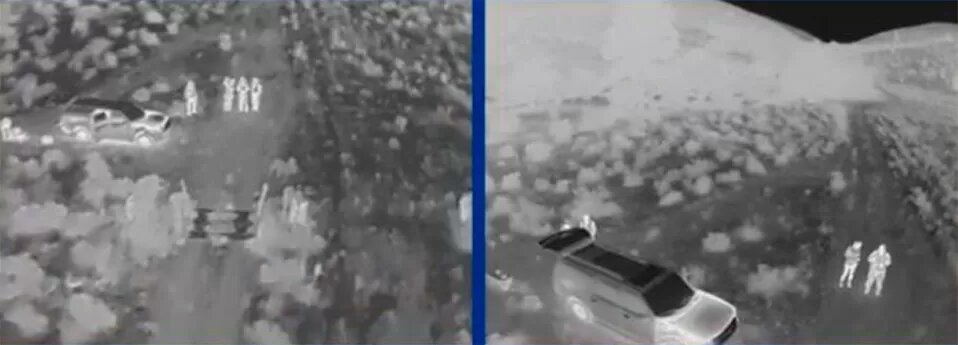
Close
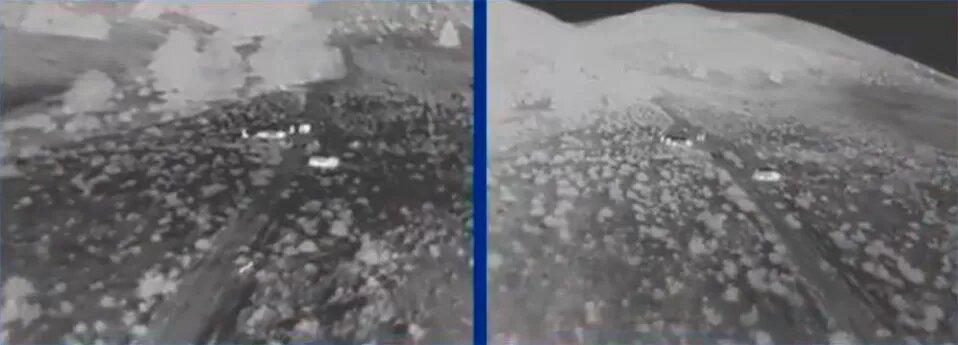

How to notice, with a resolution of 640, we have a larger coverage, but as soon as we move away, it becomes difficult to make out anything.
336 pixels:
- A person is distinguishable at 557.7 m.
- A car is distinguishable at 899.1 m.
640 pixels:
- A person is distinguishable at 333.7 m.
- A car is distinguishable at 527.3 m.
This shows that there is a compromise between image detail and field of view, as well as magnification and detection range.
The next example is similar, but with a resolution of 640 now having a smaller field of view – 32° x 26° FOV (on the top right).
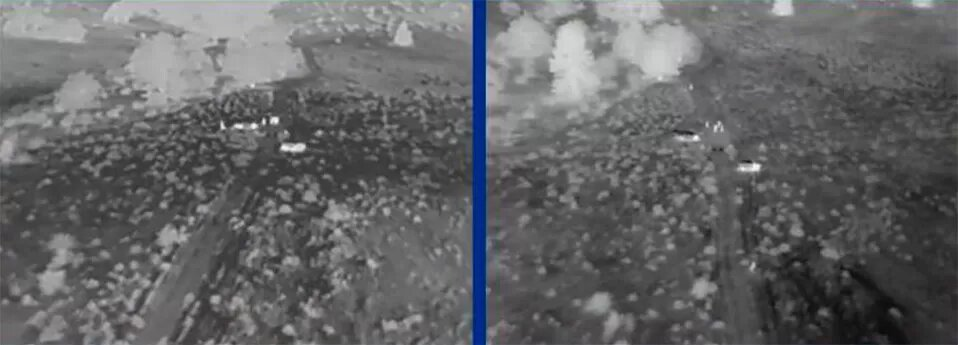
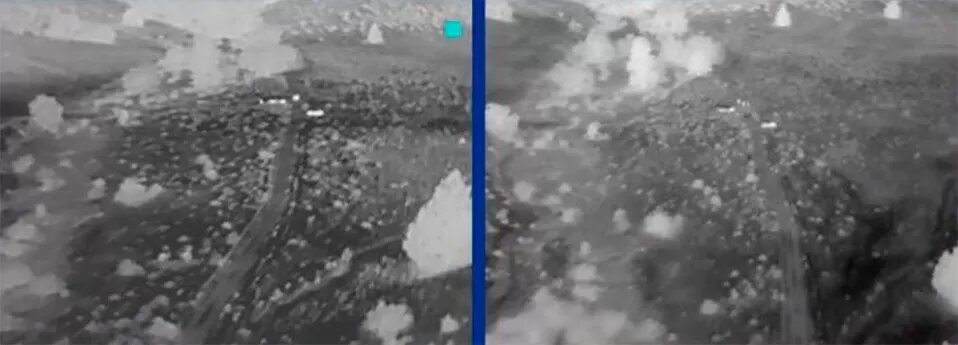
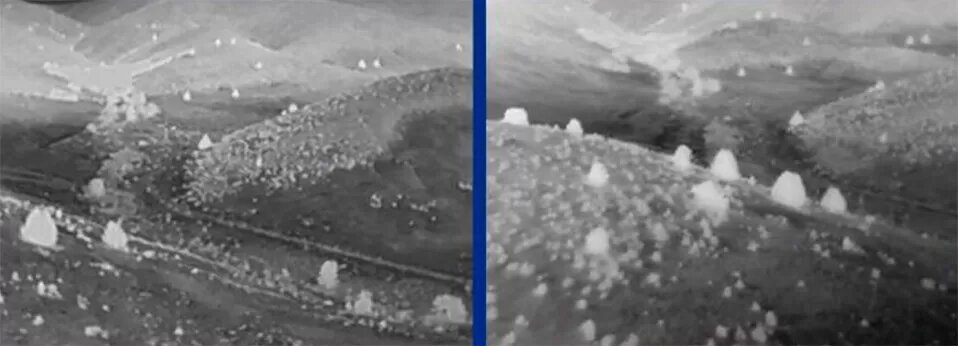
In this example, the FOV is smaller, and the object is visible much farther on 640.
336 pixels:
- A person is distinguishable at 557.7 m.
- A car is distinguishable at 899.1 m.
640 pixels:
- A person is distinguishable at 688.8 m.
- A car is distinguishable at 1152 m.
The last example shows a resolution of 640 but with lenses of 9mm (on the left), 13mm (in the center), and 19mm (on the right). This gives you a good idea of the compromise between the area you can cover and the range at which you can distinguish objects at a given resolution.
Thermal Imaging Drones
DJI Zenmuse XT2
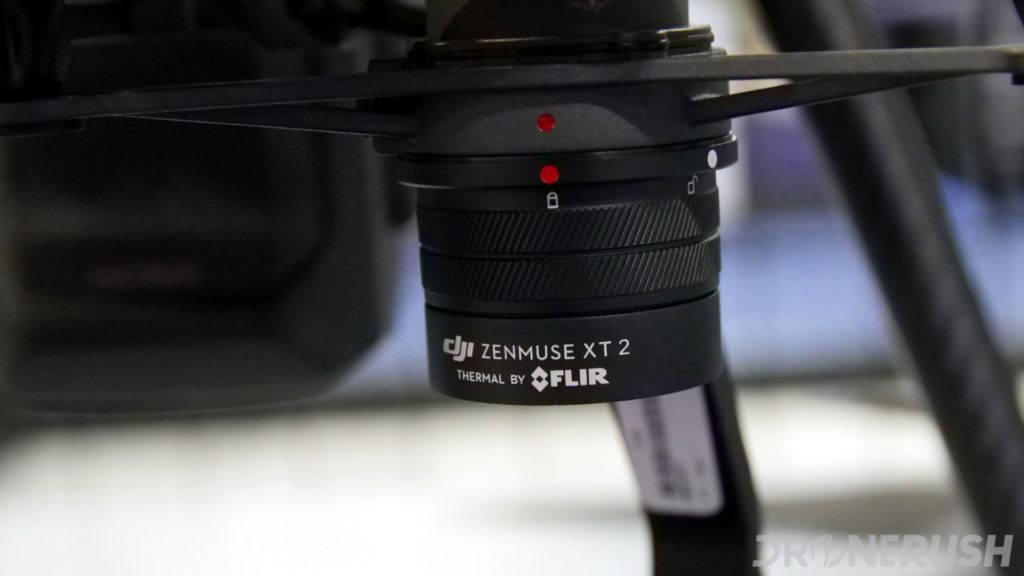
During the AUVSI Xponential 2018 event, two prominent companies collaborated to introduce advanced Infrared cameras for top-notch drones. DJI Zenmuse XT stands out as the latest and most cutting-edge camera in their lineup. Developed in partnership with FLIR, the Zenmuse XT2 thermal camera builds upon the achievements of its predecessor, the original Zenmuse XT. The initial Zenmuse XT was among the pioneering cameras of its kind to enter the prosumer drone market.

With DJI’s solution, users can capture both infrared video and standard 4K video concurrently, depending on their drone’s configuration. The Zenmuse XT2 camera seamlessly integrates with DJI’s M200 and M600 PRO series of UAVs.
Observing the M210 in action equipped with the XT2 was an insightful experience; take a look:
Unmanned systems with two cameras
UAVs equipped with two types of cameras can simultaneously capture thermal images and high-quality color photos. A notable example of this capability is the hybrid gimbal DJI Zenmuse H20T, featuring both a traditional and a thermal camera. Typically, systems with dual cameras utilize advanced software to achieve more accurate temperature measurements.
Isotherm is a user-defined setting. This feature allows users to establish specific temperature ranges, which are displayed on the drone’s control panel to highlight areas of high temperature. For instance, hunters and forestry specialists find it crucial to identify areas with extremely high temperatures, indicating potential wildfire hotspots.
A drone with a thermal camera can be configured to display only the isothermal boundaries of zones with very high temperatures for easier data interpretation. As a result, forestry professionals receive real-time alerts about potential fire threats while the drone is still airborne. This eliminates the need to wait for the drone’s flight to conclude, followed by data processing and subsequent analysis.
Unmanned systems with two cameras
UAVs equipped with two types of cameras can simultaneously capture thermal images and high-quality color photos. A notable example of this capability is the hybrid gimbal DJI Zenmuse H20T, featuring both a traditional and a thermal camera. Typically, systems with dual cameras utilize advanced software to achieve more accurate temperature measurements.
Isotherm is a user-defined setting. This feature allows users to establish specific temperature ranges, which are displayed on the drone’s control panel to highlight areas of high temperature. For instance, hunters and forestry specialists find it crucial to identify areas with extremely high temperatures, indicating potential wildfire hotspots.
A drone with a thermal camera can be configured to display only the isothermal boundaries of zones with very high temperatures for easier data interpretation. As a result, forestry professionals receive real-time alerts about potential fire threats while the drone is still airborne. This eliminates the need to wait for the drone’s flight to conclude, followed by data processing and subsequent analysis.
Next-generation thermal aerial imaging
UAVs with integrated Infrared cameras such as the Mavic 2 Enterprise Advanced, can measure the temperature of objects in challenging conditions like fog or smoke. Moreover, thermal drone such as the Zenmuse H20T boasts advanced software capabilities that allow users to set alerts if the temperature of examined objects exceeds certain parameters. It also enables tracking the temperature of selected objects, checking real-time temperatures with a single touch on the screen, overlaying a visible eye object in color over the object with the measured temperature, and optimizing image clarity.
Сonclusion
In conclusion, thermal cameras integrated into UAV systems represent an effective tool for various tasks. Modern technologies such as Zenmuse XT2 and Mavic 2 Enterprise Advanced with integrated thermal cameras expand the capabilities of aerial imaging, providing operators with a wide range of functionalities.

